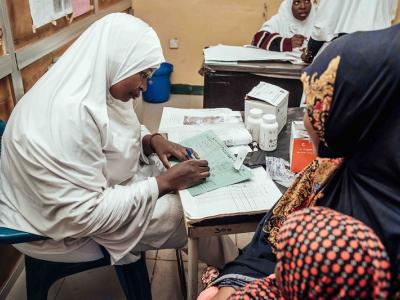In an update today on food safety testing in light of H5N1 avian flu detections in some dairy cattle, the US Department of Agriculture (USDA) said that inoculation of ground beef patties with a virus surrogate and cooking them to medium or well inactivated the virus.
In other developments, federal officials during the same briefing announced more than $22.2 million in funding for efforts to control and respond to animal disease outbreaks, including $6 million for the National Animal Health Laboratory Network, which has played a key role in testing samples from potentially infected herds.
No virus in medium or well-done burgers
Eric Deeble, DVM, the USDA's acting senior adviser for highly pathogenic avian influenza, said that, as part of the department's food safety testing, it wanted to determine what ground beef cooking temperatures could kill H5N1.
Though the virus hasn't been detected in beef cattle, some dairy cattle are used in the production of ground beef. Earlier this month, PCR testing by USDA scientists on retail ground beef samples found no traces of H5N1.
Researchers inoculated the ground beef patties with high levels of an H5N1 surrogate virus, then cooked them to different internal temperatures. Deeble said no virus was found when the beef was cooked to 145°F internal temperature (medium) or 160°F (well done).
When the virus-laden beef patties were cooked to 120°F degrees (rare), however, the tests found evidence of the virus, but at much reduced levels, he said.
Deeble said there are no recommended changes in safe cooking practices and that the longstanding USDA Food Safety and Inspection Service (FSIS) advice is to cook beef patties to an internal temperature of 160°F.
In other food safety tests, USDA scientists are testing whole-muscle cuts for any evidence of H5N1, and he said results are expected next week.
Boost for animal disease response
Regarding the funding boost for NAHLN labs, there are no concerns about testing capacity, but the infusion will build on existing capacity and add more resources, Deeble said. Some labs need updated equipment, and some of the funding will target research projects within the labs that are aimed at expanding testing methods.
Of the more than $22.2 million announced today to boost animal disease efforts, $16.2 million will target 74 projects to advance animal disease preparedness, such as helping states develop plans and practice quickly controlling animal disease outbreaks.
In addition, $1 million is earmarked for emergency preparedness, and $5 million will go directly to labs for capacity building.
Outbreak trajectory uncertain
USDA officials today said they wouldn't speculate on the current trajectory of the outbreaks or if activity has peaked.
Deeble said, however, that the lack of recent spread beyond the nine currently affected states may be partly due to the federal rule that requires testing for dairy cows before movement between states.
Meanwhile, Nirav Shah, JD, MD, principal deputy director for the Centers for Disease Control and Prevention (CDC), told reporters that although current findings from the CDC's new influenza A wastewater dashboard are reassuring, the investigation is ongoing. "There's a lot more to be done."
The dashboard, unveiled 2 days ago on the CDC's H5N1 surveillance page, found that, over the past 2 weeks, there were only 3 sites in the high category among 230 that met data reporting criteria. The sites are in Kansas, Florida, and Illinois.
Little success testing farm workers
Regarding epidemiologic and scientific investigations, federal officials last week announced—as part of new support for farms and the outbreak response—a $75 financial incentive for farm workers at affected dairy farms to be tested. Shah said so far the CDC hasn't identified any workers who are willing to participate.
He added that the CDC is eager to conduct testing to answer key questions, such as which farm jobs pose the highest risk to workers. There are no plans to add a testing requirement, Shah said. "We would like to do this in voluntary cooperation with farms and farm workers."
Federal officials said they were aware of anecdotal reports that some proponents of drinking raw milk are claiming that drinking H5N1-contaminated milk will boost immunity against the virus. Deeble said the USDA is not aware of any raw milk sold from any of the known outbreak farms. He added that the only way to protect against H5N1 infection from milk is to avoid drinking raw milk.
Even before the H5N1 outbreak in dairy cows was first detected in late March, federal health agencies have had a longstanding recommendation against drinking raw milk because of potential contamination with pathogens.




















